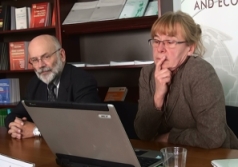Barriers to innovation

The lack of qualified personnel influences a series of other barriers to innovation, explained CASE expert Anna Wziatek-Kubiak at the most recent CASE seminar. This speaks to the highly complementary nature of innovation barriers; and most importantly, it is something to consider carefully when formulating innovation policy. "Barriers to innovation among Polish enterprises. Lessons for the Innovation Policy" held on 13 October 2010, discussed the results of MICRODYN, a four year international innovation study carried out by CASE in a consortium of international research institutions.
The goal of the seminar was to present the array of barriers to innovation which exist among Polish industrial enterprises adapting innovation between 2002 and 2006. In presenting the results, Anna Wziatek-Kubiak focused on two key issues, firstly, on the sensitivity to innovation barriers by two groups of enterprises (regular innovators and irregular innovators) as well as on the complementary trends of innovation barriers within each of these groups.
Based on microeconomic data gathered twice by the Community Innovation Survey, for the periods 2002-2004 and 2004 -2006, enterprises were grouped into two categories, namely, those who adapted innovation in both periods (regular innovators) and those who only did once (irregular innovators). Results show that in the case of irregular innovators, barriers act as a deterrent which prevents firms from engaging in innovation activities. However, among regular innovators, barriers may obstruct firms’ achievements in innovation activities, but do not play the role of a deterrent. Within each grouping, the impact of the obstacle on innovation adaption is also dependent on the level to which the barriers in question are complements of one another.
